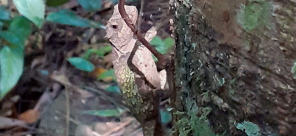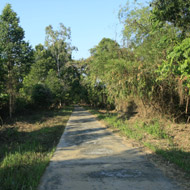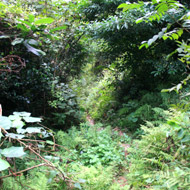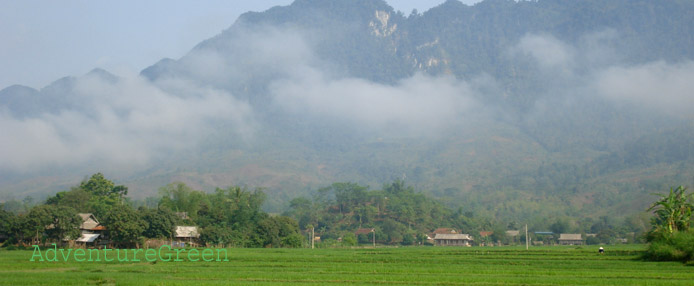Birds of Vietnam, Bird Species in Vietnam

Let's join AdventureGreen on our bird quests to learn about the different birds and bird species in Vietnam. Here you can find out more about the birding spots that these bird species are found.
- Order: Podicipediformes
- Family: Podicipedidae
Tachybaptus is a genus of small birds of the grebe or Podicipedidae family. The genus name means "quick diving": it is from Ancient Greek takhys "quick" or "fast" and bapto "I dip" or "to sink under".
1/ Little grebe (Le hôi, Tachybaptus ruficollis), also known as dabchick
- Order: Podicipediformes
- Family: Podicipedidae
Podiceps is a genus of birds in the grebe family.
1/ Black-necked grebe or eared grebe (Le cổ đen, Podiceps nigricollis)
Podicipediformes, Podicipedidae: Latin podex, podicis vent, rear-end; pes foot; podicus of the foot (pes, pedis foot). The name means foot at the rear-end, describing position of the legs.
The genus name Podiceps comes from Latin podicis, "rear-end" and ped, "foot", and is a reference to the placement of a grebe's legs towards the rear of its body.
- Order: Podicipediformes
Grebes are aquatic diving birds in the order Podicipediformes which contains a single family, the Podicipedidae, which includes 22 species in six extant genera.
Podicipediformes, Podicipedidae: Latin podex, podicis vent, rear-end; pes foot; podicus of the foot (pes, pedis foot). The name means foot at the rear-end, describing position of the legs.
Grebes are aquatic diving birds in the order Podicipediformes which contains a single family, the Podicipedidae, which includes 22 species in six extant genera.
Podicipediformes, Podicipedidae: Latin podex, podicis vent, rear-end; pes foot; podicus of the foot (pes, pedis foot). The name means foot at the rear-end, describing position of the legs.
- Order: Accipitriformes
- Family: Pandionidae
Pandion is a genus of fish-eating bird of prey, known as ospreys, the only genus of family Pandionidae.
1/ Osprey (Ó cá, Pandion haliaetus), also called sea hawk, river hawk, and fish hawk
The family Pandionidae has a single member Pandion heliaetus; known as Osprey or Fish-Hawk. The family belongs to the order Accipitriformes.
Accipitriformes from Latin accipiter/accipitri- "hawk", and Neo-Latin -formes "having the form of".
The family name Pandionidae derives from Pandíōn, the mythical Greek king of Athens and grandfather of Theseus, Pandion II.
- Order: Accipitriformes
- Family: Accipitridae
Accipiter is a genus of birds of prey in the family Accipitridae.
Accipitridae from Latin accipiter/accipitri- "hawk".
1/ Crested goshawk (Ưng Ấn Độ, Accipiter trivirgatus)
2/ Besra (Ưng bụng hung, Accipiter virgatus), also called the besra sparrowhawk
3/ Eurasian goshawk (Ưng lớn, Accipiter gentilis)
4/ Chinese sparrowhawk ( Ưng lưng đen, Accipiter soloensis)
5/ Eurasian sparrowhawk (Ưng mày trắng, Accipiter nisus), also known as the northern sparrowhawk or simply the sparrowhawk
6/ Japanese sparrowhawk (Ưng Nhật Bản, Accipiter gularis)
7/ Shikra (Ưng xám, Accipiter badius)
- Order: Accipitriformes
- Family: Accipitridae
Sarcogyps is a genus of Old World vultures in the family Accipitridae.
1/ Red-headed vulture (Sarcogyps calvus), also known as the Asian king vulture, Indian black vulture or Pondicherry vulture
Accipitridae from Latin accipiter/accipitri- "hawk".
accipitrinus Latin accipitrinus hawk-like (accipiter: hawk).
The scientific name Sarcogyps is derived from Ancient Greek and Latin. "Sarc-" comes from the Greek word "sarx" (meaning "flesh") and "-gyps" comes from the Greek word "gyps" (meaning "vulture"), making Sarcogyps mean "flesh vulture" or "vulture that eats flesh".
- Order: Accipitriformes
- Family: Accipitridae
Gyps is a genus of Old World vultures whose members are sometimes known as griffon vultures.
1/ Indian vulture or long-billed vulture (Kền kền Ấn Độ, Gyps indicus)
The genus name is from Ancient Greek gups meaning "vulture" and the species name is Neo-Latin indicus from the Ancient Greek "indikos" meaning "Indian".
2/ White-rumped vulture (Kền kền măng gan, Gyps bengalensis)
Accipitridae from Latin accipiter/accipitri- "hawk".
accipitrinus Latin accipitrinus hawk-like (accipiter: hawk).
"-gyps" comes from the Greek word "gyps" or "gups" (meaning "vulture").
- Order: Accipitriformes
- Family: Accipitridae
Elanus is a genus of bird of prey in the elanine kite subfamily. The name is from the Ancient Greek elanos for a "kite".
1/ Black-winged kite (Elanus caeruleus), also known as the black-shouldered kite
- Order: Accipitriformes
- Family: Accipitridae
- Genus: Buteo
Common buzzard (Diều thường, Buteo buteo)
The common buzzard (Buteo buteo) is a medium-to-large bird of prey in the family Accipitridae.
The species lives in most of Europe and extends its breeding range across much of the Palearctic as far as northwestern China, far western Siberia and northwestern Mongolia.
The bird is a year-round resident, except for those living in the colder parts of the Northern Hemisphere.
Buteo (Latin): Refers to a buzzard, a type of bird of prey.
- Order: Accipitriformes
- Family: Accipitridae
Buteo is a genus of medium to fairly large, wide-ranging raptors with a robust body and broad wings. Buteo is the Latin name of the common buzzard.
1/ Common buzzard (Diều thường, Buteo buteo)
2/ Eastern buzzard or Japanese buzzard (Diều Nhật Bản, Buteo japonicus)
Buteo (Latin): Refers to a buzzard, a type of bird of prey.






































